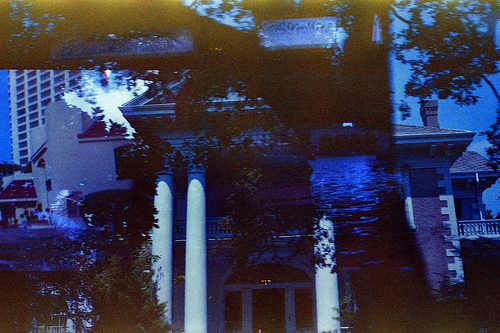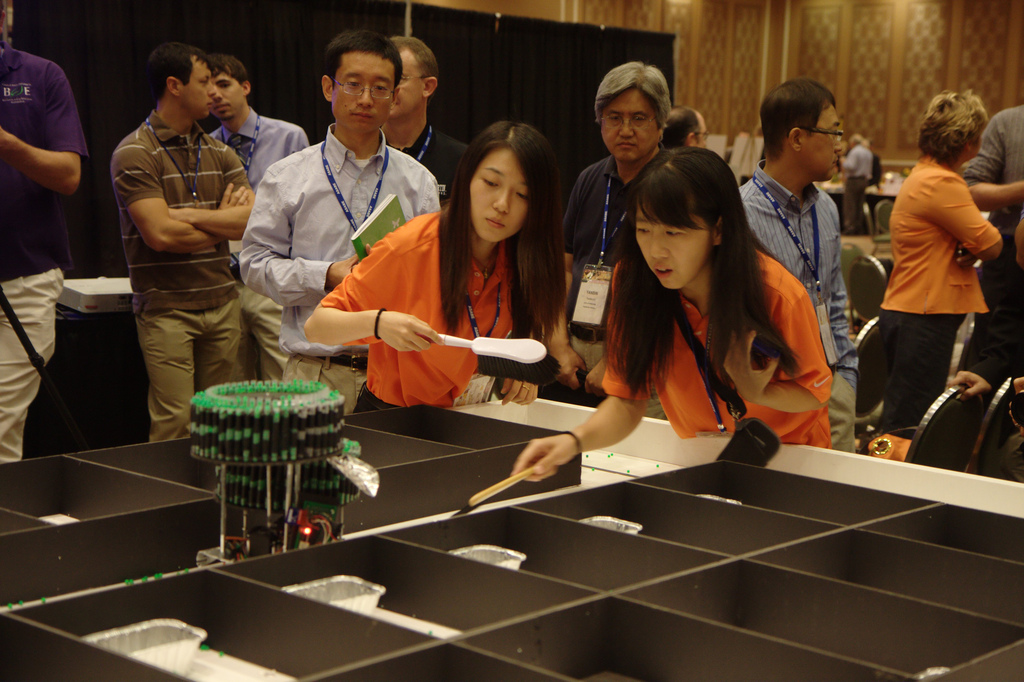When I became interested in vintage cameras, I discovered an invaluable website called Camerapedia. It was a huge wiki created by vintage camera geeks from around the world with photos and specs for thousands of cameras. I started contributing in a minor way with what little I could; a new Argus C page here or a new link for the Bilora Bella page there.
In January, I visited Camerapedia to look up some information on a new Kodak Retina IIa. What I found instead was a disturbing discussion about Camerapedia itself. One of Camerapedia’s most prolific contributors had revealed some inside information about a brewing take-over of the site. The website’s original founder and, unfortunately, sole owner of the Camerapedia domain name had entered into some sort of secret negotiations with an unnamed company to sell the domain.
There was a lot of concern about the refusal of the parties involved to offer any explanation or even name the company. It turned out they may have been justified as the company was Wikia, not exactly a well-liked name in the Wiki community. For those not in the know, Wikia operates something like the Borg from Star Trek. They move from one free community wiki to another, assimilating them through unfriendly, if not unethical, means. The content from each wiki is moved to Wikia’s ad farm, the old domain name redirected, and Wikia takes control of the administration of the Wiki, leaving the community as little more than unpaid workers supporting Wikia ad profits.
Obviously no wiki wants this, so how does Wikia get away with it? One of Wikia’s tricks is to target a wiki in which a single person controls the domain name. They offer a tempting sum of money to this one person to sell Wikia the domain name. Wikia then announces to the community that they’re going to “help” the community by providing them free hosting. This is the part where a Borg representative shows up on the main viewscreen of the Enterprise and says, “You will be assimilated, resistance is futile. Your technology will be adapted to service the Borg.”
By the time the Camerpedia community realized what was happening, the domain name had already been lost and only days remained before the domain became nothing but a redirect to Wikia’s servers. Fortunately, things didn’t go as smoothly as Wikia had hoped. A rebel force quickly formed among Camerpedia’s admins and contributors. Even though I’d been only a minor contributor, I had the privilege of becoming technical lead for the “rebel alliance”.
It was January 25 and time was critical. Wikia put the Camerpedia site into read-only mode that day, which meant they’d started the assimilation process and we now had only hours left. During the day I began receiving page lists and other information from inside sympathizers. Luck would have it that this was a Tuesday, so I skipped my usual DPRG Robot Builders Night Out meeting and stayed late at the office coding.
I set up a database and installed MediaWikia on a local server. Meanwhile, a Perl script was collecting XML exports of pages and edit histories from Camerpedia. By midnight, the export was complete and I started loading the data into my local MediaWiki. For a 10,000 page wiki, this was a time consuming process that continued throughout the night.
Without direct access to Camerapedia’s database, it wasn’t possible to get user account info. None of the sympathetic admins had access to the data either, so the backup plan was to export the public user listing and grab all the user profile pages. However, Wikia finished the assimilation and the old site went dead before that could be completed. I had a partial user listing and was able to get a large number of user profile pages, however. I wrote a quick Perl script that evening to generated random passwords and create an importable CSV file of user data.
Thursday evening, I skipped my usual Dallas Makerspace meeting and spent the time reconstructing the correct MediaWiki configuration to make the site actually work. Camerapedia relied on an assortment of MediaWiki extensions that took some guessing to figure out. I hadn’t thought to save the old version info page and Wikia reconfigured things on their assimilated version of the site.
While I was busy with geeky stuff, Voxphoto and others worked on selecting a new name and other organizational issues. As you may have guessed, the site is now called Camera-Wiki.org. Simple but descriptive; plus it had the advantage of all three major TLDs being available as well twitter and Facebook namespaces.
There were still more minor hurdles over the next weeks as we operated largely in secret. The new website was live on a local development server but before we could launch we had to find inexpensive scalable hosting. The community was already making donations to pay for the hosting. It seemed like a conflict of interest to host this at my facility, so I suggested Dreamhost. I’d had a good experience with Dallas Makerspace’s MediaWiki site hosted there. We opted for two virtual private servers, one running MySQL and one running Apache. Low-end VPS systems are not as fast as physical servers but are easily scalable, allowing us to start out cheap and scale as traffic increased.
Voxphoto started a Camera-Wiki flickr group and we began quietly letting other contributors know what we were up to. Membership in our group grew quickly and thousands of photos began pouring in. As with the original Camerapedia, the new Camera-Wiki.org, doesn’t host photos. We embed flickr photos hosted by the individual contributors. This saves money and bandwidth for us and makes it much easier for people to contribute a photo.
However, the hosting arrangement with flickr presented one difficulty for us. Camerapedia had a policy of accepting non-CC-licensed photos by using a blanket usage license that the user agreed to when submitting a photo to the Camerapedia flickr group. The wording mentioned Camerpedia by name. With a different name, it was no longer clear that we still had permission to use those images. Time to write another script.
This time I wrote a PHP program that used the MediaWiki API to export a list of every flickr image in the wiki. Then it used the flickr API to retrieve the license, user, and group affiliations for each photo. If a photo was CC licensed, we ignored it, if the user was a member of our new group and had already granted permission, we ignored it. What remained was a list of about 1,500 photos with potential copyright issues. This list was moved into a page on the wiki and we crowdsourced the problem to the editors. In most cases we were able to contact the photographers and get permission, in others we were able to replace them with CC images or images from our own group.
Interestingly, Wikia faces a similar problem with their assimilated version of the Camerapedia site. Many of the contributors allowed their photos to be used under a CC license that prohibited commercial use. Wikia is a for-profit company whose business is using those photos to sell ads. So far, they’ve made no effort to remove these photos, despite multiple direct complaints from some of the photographers asking for their removal.
We’re now very close to making an official public launch and things have slowed down enough for me to write this overly verbose blog post. I need to give credit here to all the Camerapedia admins and contributors like Voxphoto, Uwe, Dirk, Hans, HaarFager, Süleymandemir and many others, who did a lot of hard work to make this happen (sorry, I know I’m leaving out a lot of names there!). Voxphoto has been busy working on the new Camera-wiki Blog and keeping our Twitter feed going. He also designed our interim logo (a bit of a joke on the idea of forking a camera site). Vox and the other editors have also done a massive amount of work on the wiki itself, adding new pages and improving old ones.
I should also thank the many MediaWiki developers, experts, and users I sought help from along the way. More than once I was helped by people who identified themselves as “Wikia survivors”, some whose wikis had successfully escaped the takeover as we seem close to doing and others who lost their wiki and eventually gave up and moved on to other interests.
Finally, this is still an ongoing struggle and you can help. Let people know that instead of Camerapedia, they should be using Camera-Wiki.org now. Camerpedia was a well-recognized source of vintage camera information and there are links to it all over the web. Unfortunately, all those links now point to a domain that redirects to Wikia and their ad-encrusted, outdated version of the content. If you see one of those Camerapedia links, take a moment to change it or email the webmaster and let them know to change it – from camperpedia to camera-wiki.org – and maybe before long we can say for sure that the Borg didn’t win this one.


